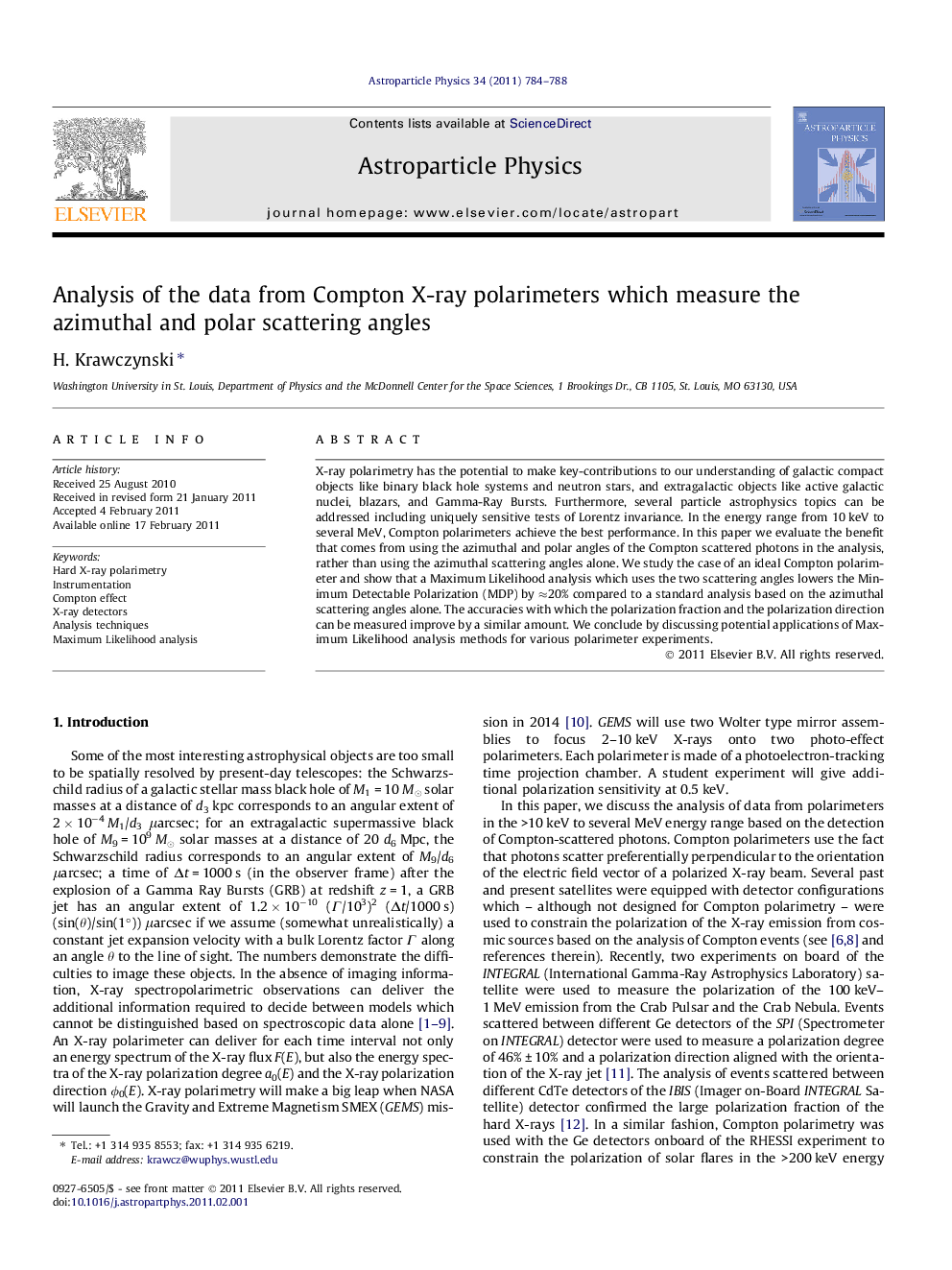| Article ID | Journal | Published Year | Pages | File Type |
|---|---|---|---|---|
| 1771003 | Astroparticle Physics | 2011 | 5 Pages |
X-ray polarimetry has the potential to make key-contributions to our understanding of galactic compact objects like binary black hole systems and neutron stars, and extragalactic objects like active galactic nuclei, blazars, and Gamma-Ray Bursts. Furthermore, several particle astrophysics topics can be addressed including uniquely sensitive tests of Lorentz invariance. In the energy range from 10 keV to several MeV, Compton polarimeters achieve the best performance. In this paper we evaluate the benefit that comes from using the azimuthal and polar angles of the Compton scattered photons in the analysis, rather than using the azimuthal scattering angles alone. We study the case of an ideal Compton polarimeter and show that a Maximum Likelihood analysis which uses the two scattering angles lowers the Minimum Detectable Polarization (MDP) by ≈20% compared to a standard analysis based on the azimuthal scattering angles alone. The accuracies with which the polarization fraction and the polarization direction can be measured improve by a similar amount. We conclude by discussing potential applications of Maximum Likelihood analysis methods for various polarimeter experiments.
